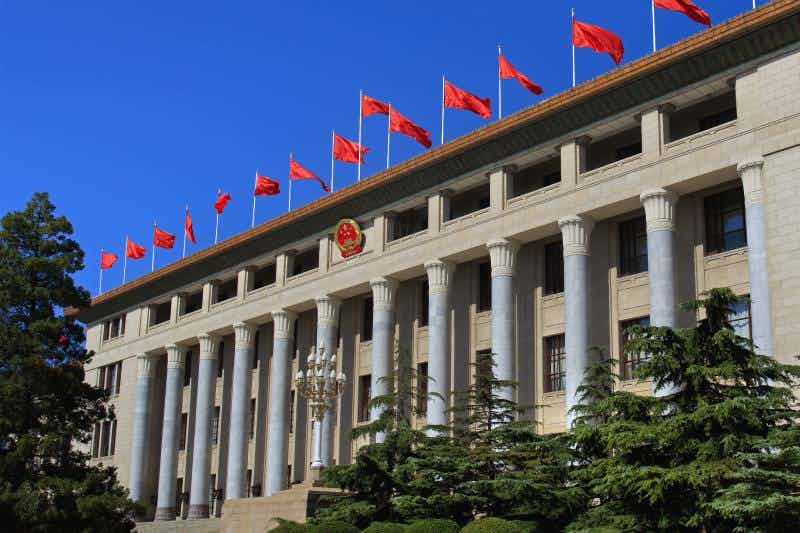China’s ban on flavored vaping products will take effect on Oct. 1, along with other standards for vape products imposed by the government over the last year. The flavor ban probably won’t affect products exported to other countries, with some exceptions.
In China, vapers are reportedly scrambling to buy and hoard flavored vape productsin advance of the ban, now just a few days away. It’s unclear if a large black market will develop in China, an authoritarian country known for harsh treatment of illicit sellers.
Last November, Chinese laws were amended to bring the vaping industry under control of the State Tobacco Monopoly Administration (STMA), which regulates Chinese tobacco products, and is actually headquartered in the same building as the China National Tobacco Corporation—the world’s largest cigarette manufacturer.
China’s new vape regulations rolled out quickly
China had already banned online sales of vaping products in 2019, and following the takeover of vaping regulation by the STMA, additional planned rules were soon announced. Product standards laid out at that time included a domestic ban on open-system products; only closed, non-refillable devices would be allowed for sale in China. Additionally, there would be a ban on synthetic nicotine, and a maximum nicotine strength of 20 mg/mL, following the European Union limit.
A draft version of the Administrative Measures for E-Cigarettes released in late November 2022 outlined licensing requirements for manufacturers and the creation of a “unified national electronic cigarette transaction management platform” for wholesale activity. Local STMA administrative units would be responsible for inspection of the vape manufacturers in their areas and would conduct technical reviews of products made by those companies, according to China Briefing.
In March 2022, the final draft of the technical standards added the flavor ban, which had been left unsettled in the previous draft. The new standards would prohibit all flavors except tobacco for products sold in China. The flavor ban was scheduled to begin May 1, but was postponed until October by the State Administration for Market Regulation, which granted final approval of the rules.
How will China’s rules affect vapers in other countries?
While Chinese regulators will not insist in all cases that products intended for export follow the same standards as those sold domestically, in one case they will. Products sold overseas must meet the standards of the destination country. But if that country has no specific standard for the vape products in question, they must meet domestic Chinese standards.
Whether that will cause problems in vaping markets worldwide may depend on how strictly Chinese regulators enforce the rules. There are now more questions than answers. For example, will manufacturers be prohibited from shipping tanks with 5 milliliter capacity to the EU or UK, where laws prohibit devices with a capacity greater than 2 mL, but the laws are generally ignored? And what about shipping products that haven’t yet been specifically authorized by the destination country’s regulators, like products not yet notified to the MHRA in the UK?
What will the punishment be for wholesalers shipping vaping products to a country that bans vape imports altogether? Will such activity be treated with a wink, or will it be enforced to the letter? Will Chinese regulators actually try to track the ever-changing rules of every country in the world and insist they be precisely followed?
The STMA is empowered to punish infractions by seemingly light methods like “holding supervisory talks,” but it also has the power to suspend a company’s license, or even to refer manufacturers for criminal charges. With an estimated 170,000 Chinese businesses manufacturing or selling vape products, we will probably find out fairly soon whether the STMA will wield its power harshly, as some fear. According to Sina News, just 190 manufacturers and 55,000 retailers had received STMA licenses as of Aug. 6, which means a lot of companies are either pulling out of the vape sector or planning to skirt the new regulations.
The good news is that China chose not to impose an outright vape ban—unlike two of the country’s semi-autonomous regions, Hong Kong and Macau, which have both banned vape sales and imports in the last year. In fact, the detailed and exacting regulations imposed by the STMA might even be seen as bestowing a degree of legitimacy on an industry viewed around the world as a contemptible “wild west.”
Depending on how difficult Chinese tobacco regulators make it for manufacturers to do business overseas, many of the rest of the world’s vapers could see big changes soon in product variety and availability. Or maybe they won't notice any change at all.

Jim McDonald
Vaping for: 13 years
Favorite products:
Favorite flavors: RY4-style tobaccos, fruits
Expertise in: Political and legal challenges, tobacco control haters, moral panics
Jim McDonald
Smokers created vaping for themselves without help from the tobacco industry or anti-tobacco crusaders, and I believe vapers and the vaping industry have the right to continue innovating to give everyone who wants to use nicotine access to safe and attractive non-combustible options. My goal is to provide clear, honest information about vaping and the challenges nicotine consumers face from lawmakers, regulators, and brokers of disinformation. You can find me on Twitter @whycherrywhy


